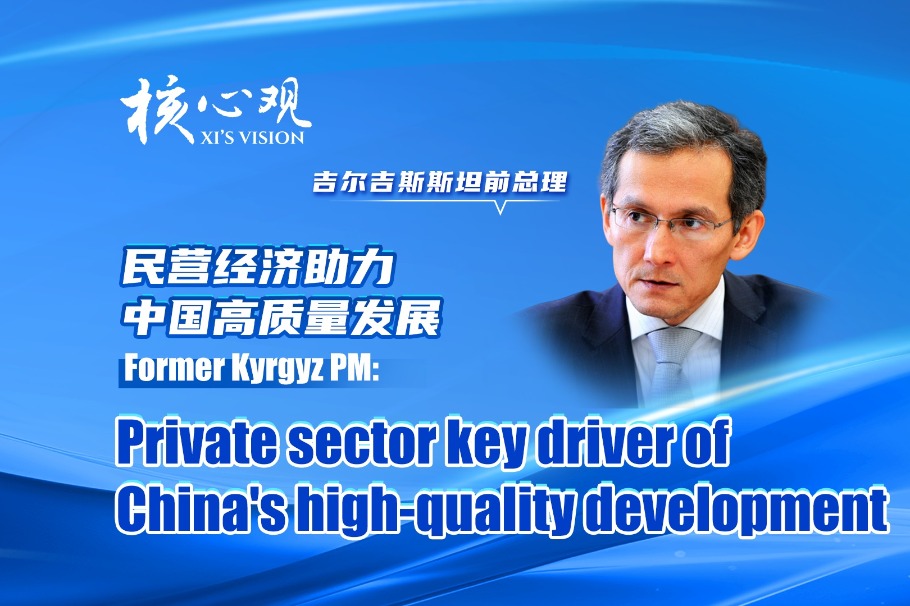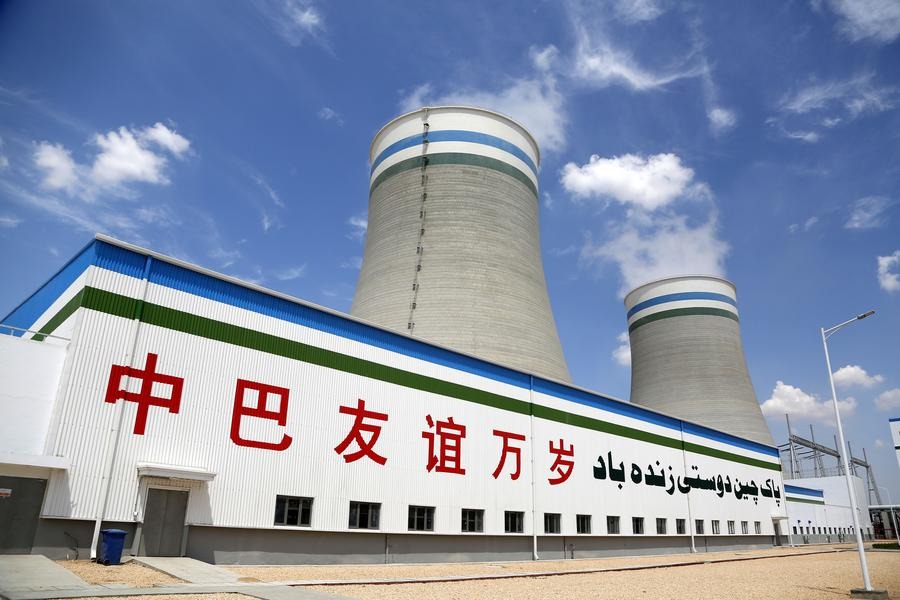Compete without breaking ties


The US' strategic competition with China and push for a 'new Cold War' are not only unlikely to achieve the US' goals but also likely to have negative impacts on both
At the end of 2017, the government of the United States released the National Security Strategy report, declaring the end of the US' "engagement policy" toward China and defining China as a "strategic competitor". From 2017 to 2024, because of a series of policies aimed at containing China, Sino-US relations reached a historic low.
Throughout Donald Trump's first presidency and during the Joe Biden administration, the US policy of strategic competition with China continuously evolved to become fully systematized. This trend won't change in the near term.
In recent years, the voices within the US advocating containing China have been growing louder. The technology war has been a constant thread, emerging as the core means for the US to contain China's development. The Trump administration was more inclined toward unilateralism, with "America First" being its guiding principle, sparing no effort in employing various means to advance its policies. In Trump's first term, the China-related technology strategy tended to exert maximum pressure, with "decoupling" as the main thread. The US coerced its allies into keeping pace with it and employed a range of stringent restrictions on technology, personnel and financial transactions to "strangle" China's high-tech industries.
In contrast, the Biden administration's governing philosophy integrated neoliberal institutionalism with realism. It regarded technology professionals as a key force in strategic planning and actively involved them in making technology strategies. Moreover, many members of the administration were from the pro-establishment political camp of the Democratic Party. Leveraging their long-standing close cooperation with academia, they weighed various factors and developed a more rigorous, rational and feasible technology strategy. Regarding China, the Biden administration adopted a more cautious "selective decoupling "approach. It laid out strategies in key technology areas such as artificial intelligence, 5G, biotechnology and quantum information. It also promoted a high-tech ban or restriction policy known as "small yard with high fences", emphasizing the need to work with allies to build a "democratic technology alliance "and attempting to restrict China's development by shaping international rules. It further intensified restrictions on technological exports to and industrial investment in China through legislation and measures such as export controls, investment reviews, telecommunications licensing and equipment authorization. It also coordinated with allies in an attempt to isolate China in the field of semiconductors.
Judging from the current trend, the US' strategic competition policy toward China faces many restrictions. From an internal perspective, the differences between the US' two major political parties' willingness to cooperate with China are becoming increasingly apparent. In terms of strategic competition with China, the Democratic Party has relatively stable and clear goals, paying great attention to controlling the intensity and pace of competition and showing a strong desire to manage it. The Democrats advocate addressing various global challenges such as climate change, public health, debt and food security with China, believing that without cooperation between the two major powers, it's difficult to solve many global problems. In contrast, the Republican Party shows a clear lack of willingness to cooperate with China, arguing that there is a fundamental confrontation between China and the US, which makes it hard for the two sides to collaborate in global governance.
Moreover, the contradictions between the hard-liners on China and US tech giants have already been made public. For example, when the Biden administration imposed chip export controls on the Chinese market, US chip manufacturer Nvidia launched a special version that does not require an export license.
From an external perspective, the US' efforts to rally its allies to form an encirclement containing China have achieved limited success. Its allies, based on their own interests, have not fully cooperated with it in the political, economic or military fields. In recent years, the US has shown strong uncertainty in its foreign policy and handling of international affairs. In the fields of technology and values, US allies regard China as a "competitor", while in the economic sphere, China is a partner they have to cooperate with. This complex relationship has led US allies to exhibit ambivalence or even multiplicity when formulating their China policies. On the one hand, they need to weigh the uncertainties of the US. On the other hand, they have to make choices between competition with China and substantial economic benefits. These factors are all internal obstacles to the US' efforts to build encirclement against China with its allies.
It is noteworthy that the various limitations faced by the US in its attempts to once again dominate the high-tech industry chain, further suppress China's sci-tech innovation and high-end manufacturing reflect the reality that it is unable to completely "decouple" with China, the world's largest manufacturing powerhouse. At the same time, these limitations also provide new impetus for China to achieve independent innovation in science and technology. Against this backdrop, the Trump administration has voiced hard-line stances toward China on various occasions. Trump and his team share a clear consensus: They all subscribe to the "America First" doctrine, all aim to maximize US interests in interactions with China, and all advocate the continuation of a strategic competition framework that maintains the basic principle of suppressing and containing China. All these signs show an even more pronounced radicalization trend. Besides, the Trump administration is divided into three major factions: the technocratic elite, China hawks and the pragmatists. These factions have ongoing disputes over core issues, and this internal tension could potentially affect the continuity of policy.
Moreover, one of the focuses of Trump's second term is on reshaping its relationship with the world. From Trump's campaign rhetoric in 2024 to his policy implementation since taking office on Jan 20, China-related issues have so far not been put high on the agenda of the US government. China is seen as both the "greatest competitor" and an important partner for reshaping the world order based on the principle of prioritizing US interests.
Overall, the Trump administration will remain committed to the "America First" policy and continue to advance the political agenda of "Make America Great Again".Trump's main economic policies toward China in his second term may center on direct suppression, covering four major areas: tariffs, export restrictions, investment restrictions and financial and technological sanctions. Both the scope and intensity of these policies are expected to exceed those of previous policies, with a high likelihood of dense rollout of policies in the short term.
Looking to the future, the trajectory of the US' China policy during Trump's second term is being closely watched. Against the backdrop of ongoing geopolitical upheavals such as the Ukraine crisis and the Israel-Palestine conflict, the US' continuous strategic competition with China and even its push for a "new Cold War" are not only unlikely to achieve the US' goals but also likely to bring negative impacts on itself and the global community. In the future, antagonistic contradictions between China and the US will persist, yet the relations may still remain in a state of "competing without breaking ties". The evolution of the US' policy on strategic competition with China is unlikely to transcend this trend.
Zhu Feng is dean of the School of International Studies at Nanjing University. Ling Banghao is a research assistant of the Collaborative Innovation Center of South China Sea Studies at Nanjing University. The authors contributed this article to China Watch, a think tank powered by China Daily. The views do not necessarily reflect those of China Daily.
Contact the editor at editor@chinawatch.cn.


































